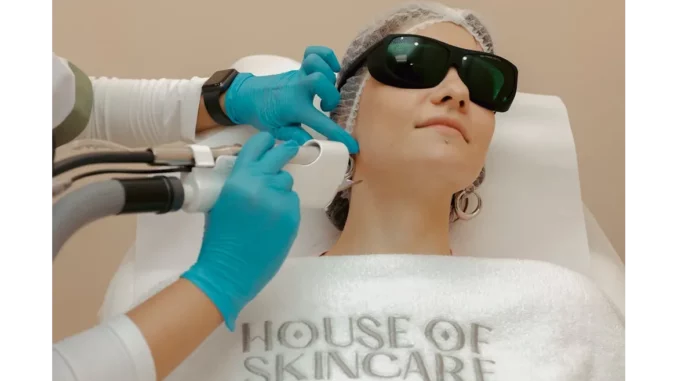
In an era where medical advancements are accelerating at an unprecedented rate, the intersection of technology and healthcare has engendered a fascinating field: aesthetic medicine. Recently, I had the privilege of discussing this burgeoning domain with Dr Emily Harrington, a veteran practitioner who has observed the transformative impact of aesthetic innovations, not only on her patients but also on the operational dynamics of her practice.
During our conversation, Dr Harrington’s enthusiasm for her field was immediately evident. She began by reflecting on her early years in the profession. “When I first entered the field, the focus was largely on reconstructive procedures,” she recounted. “However, over the years, aesthetic medicine has evolved into a dynamic and accessible sector.” This evolution has allowed small medical practices to leverage these innovations, providing them with the means to thrive in an increasingly competitive marketplace. Dr Harrington shared insights into how these advancements have offered a lifeline to practitioners who might otherwise struggle to maintain their practices.
“Aesthetic procedures have become integral to our operations,” Dr Harrington remarked. “They provide a reliable revenue stream and attract a diverse clientele who might not have considered visiting a medical professional otherwise.” This shift in focus has broadened the appeal of medical practices, allowing them to engage with a wider audience and thereby enhance their sustainability.
The conversation naturally transitioned to the technological advancements that have driven this shift. Dr Harrington highlighted several innovations that have significantly influenced the field. “Non-invasive treatments, such as laser therapies and injectables, have truly revolutionised aesthetic medicine,” she explained. “These procedures typically require less downtime and are more cost-effective, which broadens their appeal.” The increased accessibility of these treatments has led to a surge in demand, enabling small practices to expand their service offerings. Dr Harrington emphasised the importance of this diversification, noting, “Incorporating aesthetic services has allowed us to maintain financial stability, even as conventional medical services encounter heightened competition and stricter insurance reimbursements.”
Beyond financial viability, the introduction of aesthetic medicine has enriched the patient-practitioner relationship. Dr Harrington observed, “Patients are more engaged when they witness tangible results. It fosters a sense of trust and satisfaction, which is invaluable.” This enhanced engagement underscores the broader implications of aesthetic advancements, suggesting that they are reshaping the healthcare landscape to be more patient-centric and personalised.
As we delved deeper into the discussion, Dr Harrington expressed her conviction that aesthetic medicine is at the forefront of healthcare innovation. “It’s a field that’s perpetually evolving,” she noted. “Every year brings new developments that challenge the boundaries of possibility.” For practitioners like Dr Harrington, staying informed about these advancements presents both a challenge and an opportunity. Continuing education and training are essential to ensure that they can provide the latest and safest treatments to their patients. “It demands dedication,” she conceded. “But the outcomes are worth the effort.”
Reflecting on our discussion, it became evident that the ripple effects of advancements in aesthetic medicine extend well beyond individual practices. They are driving a paradigm shift in healthcare delivery, making it more personalised and patient-focused. Dr Harrington’s experiences highlight an essential point: these remarkable advances are not solely about enhancing physical appearance. They empower small medical practices to adapt and flourish in a constantly evolving environment. By embracing innovation, these practices can continue to serve their communities effectively and sustainably.
As our interview drew to a close, Dr Harrington offered a hopeful perspective. “The future of aesthetic medicine is bright,” she remarked with optimism. “And as long as we continue to prioritise patient care and uphold ethical practices, I believe small practices will continue to prosper.” In a world marked by rapid change, the narrative of aesthetic medicine stands as a testament to the resilience and adaptability of small medical practices. It serves as a reminder that even amidst challenges, there is always room for innovation and growth.


Be the first to comment